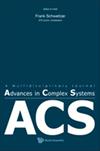布尔加科夫小说《大师与玛格丽塔》语言交际的网络分析
IF 1
4区 数学
Q4 MATHEMATICS, INTERDISCIPLINARY APPLICATIONS
引用次数: 0
摘要
本文对苏联时期最受欢迎的俄罗斯小说之一布尔加科夫的《大师与玛格丽塔》中的语言交际结构进行了网络分析。这部小说的结构很复杂(故事中有故事)。此外,小说中真实世界的人物与虚幻世界的人物是相互作用的。这种复杂而不寻常的构成使得小说对网络分析特别有吸引力。在我们的研究中,只考虑了明确呈现和表演角色之间的配对口头交流(对话)。基于一个人物对言语交际矩阵,构造了一个图,图的顶点是小说中的人物,图的边对应着人物之间的联系。只考虑成对的口头交流导致的结果是,字符网络可以用普通图来描述,而不是有向图。由于对话的活动超出了我们的预期范围,所以边缘没有被赋予权重。图的最大连通部分有76个字符。计算中心性,如程度、中间度、接近度、特征向量和分类系数来表征网络。并对网络中的群落结构进行了分析。除了小说叶尔沙拉姆部分的人物和莫斯科部分的人物之外,分析还揭示了莫斯科部分的精细结构。利用中心性分析,找出了一组主要特征。小说的中心人物是科罗维耶夫、玛格丽塔、贝兹多姆尼、沃兰、比伯斯、阿扎泽洛、博索伊、瓦列努卡、马斯特和列维·马修。本文章由计算机程序翻译,如有差异,请以英文原文为准。
Network Analysis of Verbal Communications in the Novel the Master and Margarita by M. A. Bulgakov
A network analysis of the structure of verbal communications in one of the most popular Russian novels of the Soviet era The Master and Margarita by Bulgakov has been carried out. The structure of the novel is complex (a story within a story). Moreover, the real-world-characters and the other-world-characters are interacting in the novel. This complex and unusual composition makes the novel especially attractive for a network analysis. In our study, only paired verbal communications (conversations) between explicitly present and acting characters have been taken into account. Based on a character pair verbal communication matrix, a graph has been constructed, the vertices of which are the characters of the novel, while the edges correspond to the connections between them. Taking only paired verbal communications into account leads to the result, that the character network can be described by an ordinary, rather than a directed graph. Since the activity of the conversations was out of our intended scope, the edges have been given no weights. The largest connected component of the graph consists of 76 characters. Centralities, such as degree, betweenness, closeness, eigenvector, and assortativity coefficient were computed to characterize the network. The structure of the communities in the network was also analysed. In addition to the obvious large communities-the characters from the Yershalaim part of the novel and the characters of the Moscow part-the analysis also revealed a fine structure in the Moscow component. Using the analysis of centralities, a group of main characters has been detected. The central characters of the novel are Koroviev, Margarita, Bezdomny, Woland, Behemoth, Azazello, Bosoi, Warenukha, Master, and Levi Matthew.
求助全文
通过发布文献求助,成功后即可免费获取论文全文。
去求助
来源期刊

Advances in Complex Systems
综合性期刊-数学跨学科应用
CiteScore
1.40
自引率
0.00%
发文量
121
审稿时长
6-12 weeks
期刊介绍:
Advances in Complex Systems aims to provide a unique medium of communication for multidisciplinary approaches, either empirical or theoretical, to the study of complex systems. The latter are seen as systems comprised of multiple interacting components, or agents. Nonlinear feedback processes, stochastic influences, specific conditions for the supply of energy, matter, or information may lead to the emergence of new system qualities on the macroscopic scale that cannot be reduced to the dynamics of the agents. Quantitative approaches to the dynamics of complex systems have to consider a broad range of concepts, from analytical tools, statistical methods and computer simulations to distributed problem solving, learning and adaptation. This is an interdisciplinary enterprise.
 求助内容:
求助内容: 应助结果提醒方式:
应助结果提醒方式:


